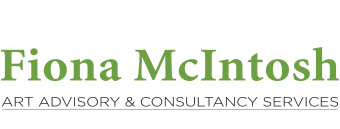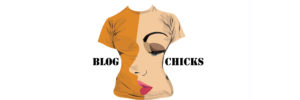I ventured into a different world this week. I went to the University of Sydney and discovered a couple of gems: the University Gallery and the Macleay Museum. www.sydney.edu.au/museums
The attraction was the late German artist and activist, Josef Beuys. There was a pre-opening (mini) symposium last Saturday and then I returned on Monday during opening hours to view the exhibition on at the University Gallery.
The symposium and exhibition are hosted by the Power Institute at the University of Sydney. Dr John JW Power was a medico doctor and an artist (of some note) himself who became a significant benefactor to the University last century.
 |
| John Joseph Wardell Power Cubist composition with nautical elements gouache 36 x 20.5cm Collection The Art Gallery of NSW, purchased 1964 |
His is a comprehensive, enduring legacy which culminated in the Museum of Contemporary Art www.mca.com.au. For more on the Power Institute go to www.sydney.edu.au/arts/power. The exhibition of Josef Beuys and the ‘Energy Plan’ is part of series to commemorate the 50th anniversary of that bequest. I digress but everything is so interwoven I think a bit of background is important.
Back to the symposium last Saturday – I was so glad I went. I do not always feel like that after an art talk fest, but I have always struggled with Beuys and wanted to know more. All I needed were some of his stories (and possibly a little more of my own maturity and patience) and the penny began to drop.
Speakers included Tony Bond Deputy Director at the AGNSW and Bernice Murphy former curator of the Power Institute (and initial Chief Curator and Director of the MCA). Both knew Beuys, his works and his main dealers well and have been strong advocates of his work here.
 |
| photographer unknown |
Artists Janet Laurence (see my blog 22.03.2012) and Tom Nicholson (see my blog 9.03.2012) spoke of Beuys’ influence on their respective practices – both for quite different reasons: Janet’s more from an environmental perspective and the idea of social connectivity and Tom, from a performance perspective.
What I took away was that Beuys was a peaceful revolutionary. His practice which included sculptures, ‘actions’ (performances), and documentation of the actions (traces) was focussed on the healing powers of art and art as social action. He was deeply connected to his social, political, spiritual and mythical world view. He was influenced by the philosophies of Steiner, by the struggles of St Ignatius who founded the Jesuit Order and, most particularly, by his and his country’s role in WWII.
Beuys joined up in 1940 and ended up with the Luftwaffe. He was shot down over Crimea in the Ukraine and rescued by Nomadic Tartars. These people saved him from hypothermia by smearing his body with animal fat and wrapping him in felted animal hair/ fur. Much of his later sculpture features felt and fat, two natural substances that, for him, were life savers.
The war, his role and his fellow countrymen’s shame must have informed his thinking. It was something he struggled to truly come to terms with. He would not have been alone: the post-war generations in Germany found it difficult to reconcile their’s and their forebears roles in the Holocaust. Many sought to find new paradigms, to reshape and shift the traditional cultural and social boundaries. Beuys’ peaceful actions to invigorate social change on many levels must have been inspiring for many, not just artists.
To my mind he was an optimist and an idealist and channelled this into his art work and art activism. He became Professor at the Kunst Akademie in Dusseldorf where he had studied sculpture. He established the German Student Party in 1967 which had as its focus, worldwide disarmament and educational reform; he was at the forefront of the Free International University, established in 1972, which promoted the creative potential in all and advocated the crossover between disciplines of sciences and arts and he was one of the 500 founding members of the Green Party in 1979, which has since become a powerful political force in Germany.
His entire art practice was a continuum of revolutionary ideas, and mostly ones which explored the interconnectedness of the natural world, life forces (including metaphorical ones), social activism, healing powers in nature (animals, plants, elements), alchemy and sciences. He wove a belief in shamanism into his practice – that every being in the universe is alive and enmeshed – and he used symbols from these belief systems many times over. He was a major influence on his generation and beyond, locally and internationally.
This exhibition focuses on what items are held in the Power Collection. Curator Donna West Brett has written an eloquent catalogue essay which discusses much of the history of Beuys, his social sculpture and some of his more significant works/ actions, though not all is featured on the Uni walls. The catalogue is available online www.sydney.edu.au/museums/pdfs/Art_Gallery/666%20Beuys_catalogue_finalextra.pdf
and is certainly worth a read, particularly beforehand. I say this because, visiting the exhibition without having any prior knowledge of Beuys’ work, could leave you cold. If you missed the action in the 70s, you missed the artwork. What we now rely on is documentation, the remnants of the moment. The work becomes historical not immediate; the experience is vicarious and theoretical. That does not lessen Beuys’ significance as an artist; it just makes it difficult to walk into an exhibition of traces of these actions and really understand what he was doing and why.
But, historically, it is really important that these traces are held in collections, to be considered and reconsidered against the backdrop of ensuing artistic practices. Beuys’ work sits within a tradition of revolutionary art, think Duchamp or Klein, but it does not shock or offend. It has an integrity and honesty about it. It falls with the realm of what we understand to be art, but in order to read it, context is what is required.
To be honest, I would have been lost if it were not for the symposium and a quick read of the essay. His work is not a pretty bunch of flowers or a technical painterly feat. The ‘social sculpture’ is easier to read but again needs an explanation. There was one in this exhibition. How to read a felt suit?
 |
| Josef Beuys FilzAnzug (Felt Suit) 1970 felt, cotton, ink on sythetic fabric & metail safety pins, ed 69/ 100 ,160 x 73, 2cm JW Power Bequest, The University of Sydney, acquired 1972 |
The Filz Anzug (Felt Suit) 1970 is just that: a modest man’s business suit, made from felt. There are no distractions with a wearer as it is just the suit, hanging fairly stiffly from hanger. Simple, unadorned – western in style. No buttons or lining. Made from a cloth that is generally handmade from natural fibres. In the context of Beuys, it becomes a source of life – it protects and warms whoever wears it. I imagine this is Beuys’ homage to those nomadic peoples who saved him. Now, two such simple things – felt and clothing – take on mythic and heroic proportions. But how to think this through when confronted by the suit itself and nothing else? Historically and conceptually it is interesting; aesthetically it is difficult.
The University Gallery is tucked up in a garret in the main quadrangle of Uni of Syd. If you continue past the main quad, follow the signs to the Macleay Museum. Up the stairs, it also feels like it is in the garret. What a find! A natural history museum which is small but stuffed with vitrines, stuffed with stuffed birds, marsupials, weird looking things in jars, skeletons, trays of pinned bugs and beetles: all specimens from eons ago. It is a wonderworld. So it comes as no surprise that artists like Robyn Stacey www.stillsgallery.com.au and Janet Laurence have spent time there, fossicking around, drawing inspiration from the collection. The smell – also natural: pure naptholene.
Again there is a nice cross over between the science and art worlds: a small exhibition with 4 women artists who have created art works which respond to both the current research into coral life at the University and our relationships to this fragile watery world. Jacky Redgate and Debra Dawes www.gbk.com.au have collaborated on a silent video, Jenny Pollak has created coral forms which resemble human skulls www.jennypollak.com and Carmel Wallace has woven tiny washed up coral and other sea bits together www.carmelwallace.com . This museum is a real gem and worth a visit.
 |
| Jenny Pollak One degree of separation #1 2011 ceramic image courtesy of the artist |
It was great to be back on campus, surrounded by beautiful buildings, a sense of living history and engagement. There was even a real protest going on with placards and police but I gather it degenerated later into a riot – not so good. For a moment though, it was reassuring to see activism alive and well.



No Comments Yet